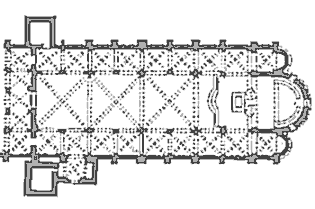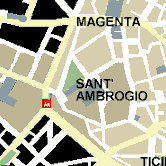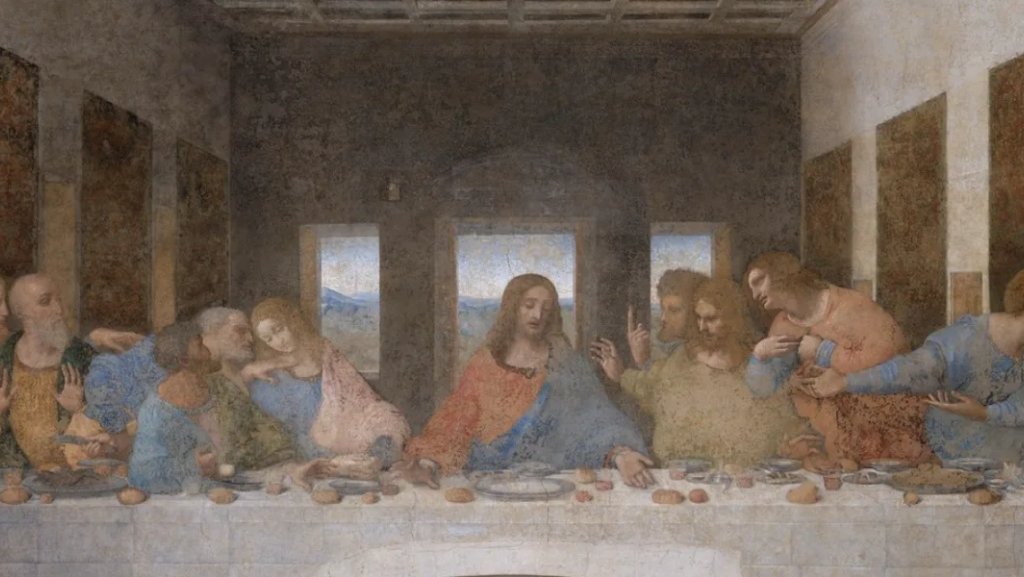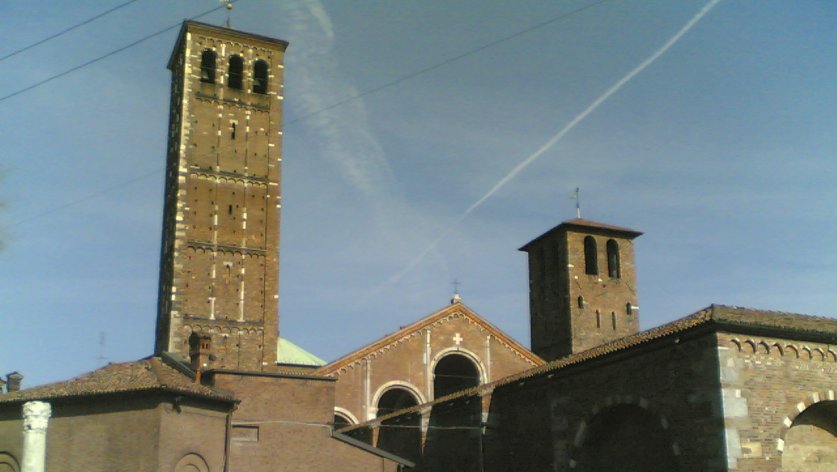Milano
Brera
Castello
Duomo
Giardini
La Scala
Corso Magenta
Monte Napoleone
Sant'Ambrogio
Ticinese
Università
Navigli
Triennale
Porta Nuova
CityLife
Brera
Castello
Duomo
Giardini
La Scala
Corso Magenta
Monte Napoleone
Sant'Ambrogio
Ticinese
Università
Navigli
Triennale
Porta Nuova
CityLife
SantʼAmbrogio
more pictures .:. Dedicated to Ambrose, Milan's patron saint, this basilica is a typical example of Romanesque architecture of the first centuries after 1000 AD.
.:. Cross the wide porticoed atrium in front of the church, then - once inside - note the proportions of the building plan: each of the squares that make up the nave is exactly equal to four of the squares of the aisles.

.:. Don't forget to admire the 12th-century pulpit and the gilded main altar, under a 9th-century cyborium.
.:. An exit on the left leads to the Basilica's museum. Among its treasures is a collection of tapestries and precious fabrics, some of which are truly ancient (4th century AD). There are numerous illuminated manuscripts, although not all the basilica’s patrimony of manuscripts, kept in its nearby library, has yet been studied in depth. In the museum are paintings by Zenale, Bergognone, Luini, and evidence of phases in the basilica’s construction: fragments of previous architectures, of the ancient doors, of mosaics, and of stained glass panes.
.:. This district also boasts the Museo della Scienza e della Tecnologia, the best and largest in the country for science and technology, which has a very good website.
.:. The Museo della Scienza is hosted in a Renaissance monastery, whose nearby church, the richly stuccoed and frescoed San Vittore, shouldn't be missed either.
more pictures .:. Dedicated to Ambrose, Milan's patron saint, this basilica is a typical example of Romanesque architecture of the first centuries after 1000 AD.
.:. Cross the wide porticoed atrium in front of the church, then - once inside - note the proportions of the building plan: each of the squares that make up the nave is exactly equal to four of the squares of the aisles.

.:. Don't forget to admire the 12th-century pulpit and the gilded main altar, under a 9th-century cyborium.
.:. An exit on the left leads to the Basilica's museum. Among its treasures is a collection of tapestries and precious fabrics, some of which are truly ancient (4th century AD). There are numerous illuminated manuscripts, although not all the basilica’s patrimony of manuscripts, kept in its nearby library, has yet been studied in depth. In the museum are paintings by Zenale, Bergognone, Luini, and evidence of phases in the basilica’s construction: fragments of previous architectures, of the ancient doors, of mosaics, and of stained glass panes.
.:. This district also boasts the Museo della Scienza e della Tecnologia, the best and largest in the country for science and technology, which has a very good website.
.:. The Museo della Scienza is hosted in a Renaissance monastery, whose nearby church, the richly stuccoed and frescoed San Vittore, shouldn't be missed either.

.:. CiaoMilano was conceived and is edited by KIWI Milano. It relies on the Foundation 6 framework, and is released under a Creative Commons Attribution-NonCommercial-NoDerivs 4.0 International licence.
.:. Icons by
.:. copyright © 1997-2025 Roberto Peretta, Milano; copyright © 1997-2006 Monica Levy, Milano
.:.Monica Levy, who created this website in 1997, is no longer with us. Her smile is behind this word.
Da Vinci = No Problem

The Last Supper, otherwise difficult to book?
You can reserve a specialized visit through our partner Musement.

The Last Supper, otherwise difficult to book?
You can reserve a specialized visit through our partner Musement.
CiaoMilano does not collect personal data or e-mail addresses, except for press professionals and readers who write directly.
Our Privacy Policy
updated on December 19, 2025
Our Privacy Policy
updated on December 19, 2025
 Milano
Milano Hotels
Hotels Transport
Transport What's On
What's On Eating
Eating Shops
Shops After dark
After dark Out of town
Out of town





 Sant'Ambrogio
Sant'Ambrogio
